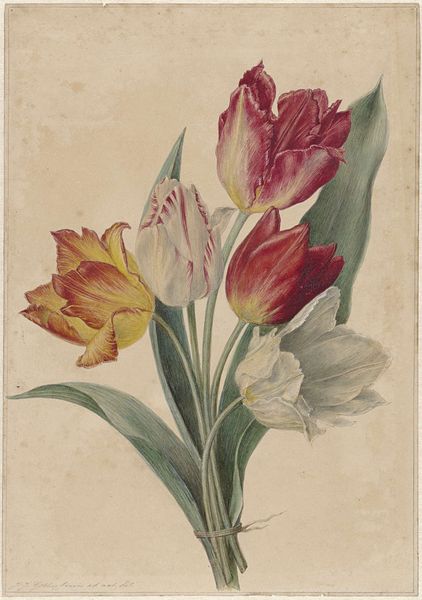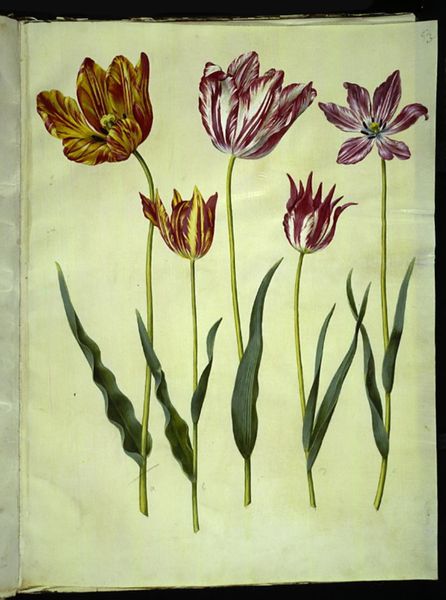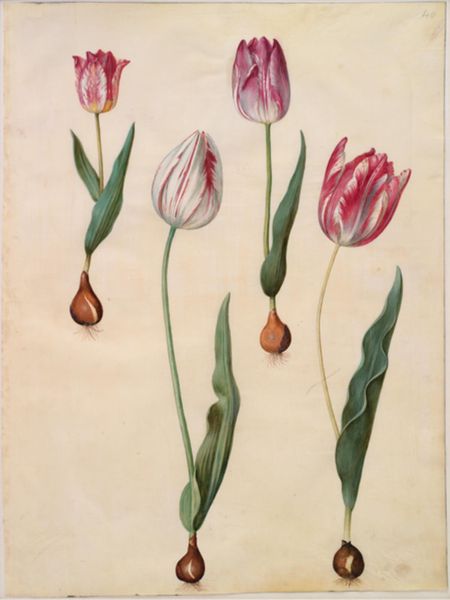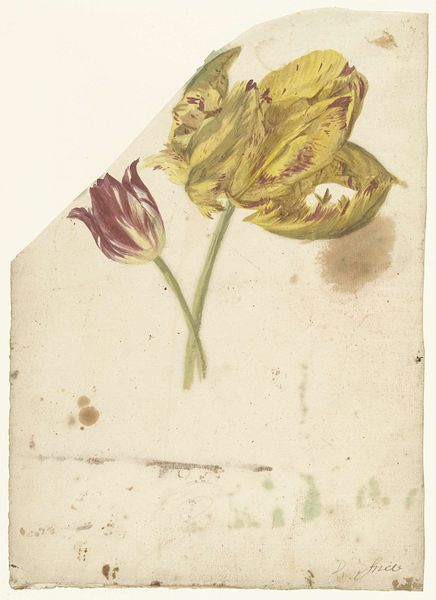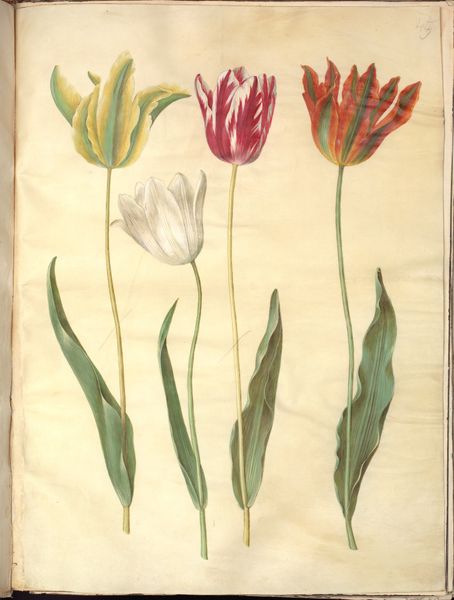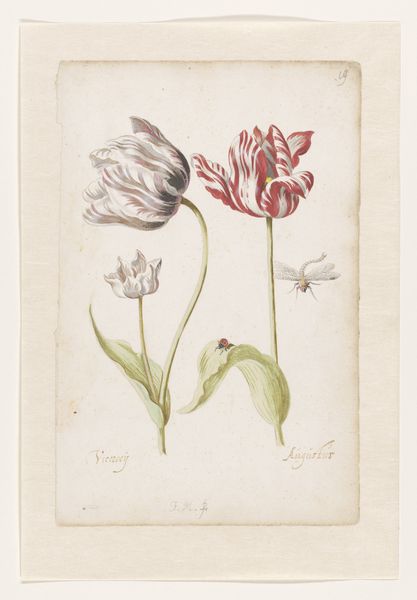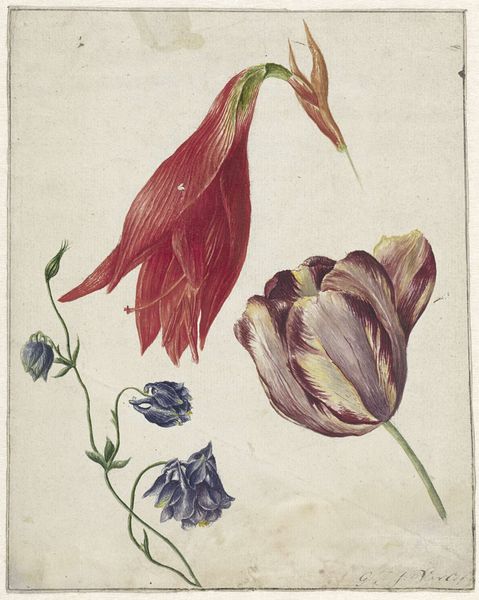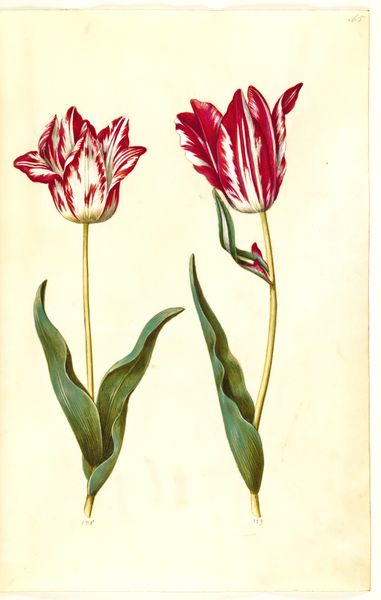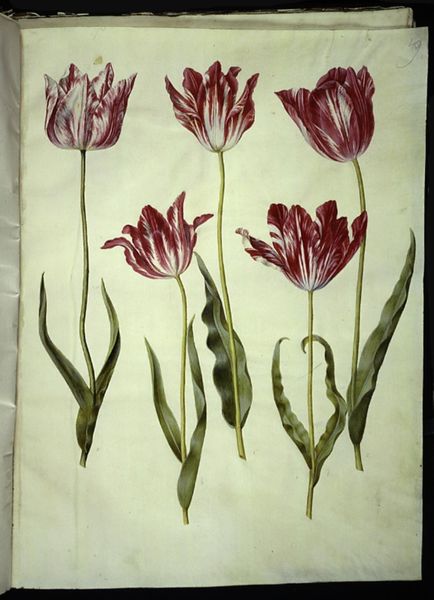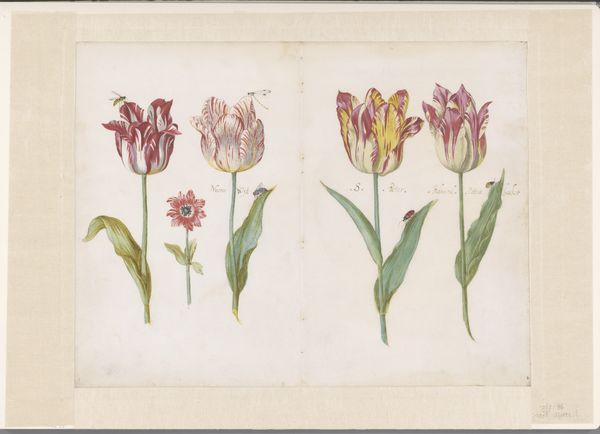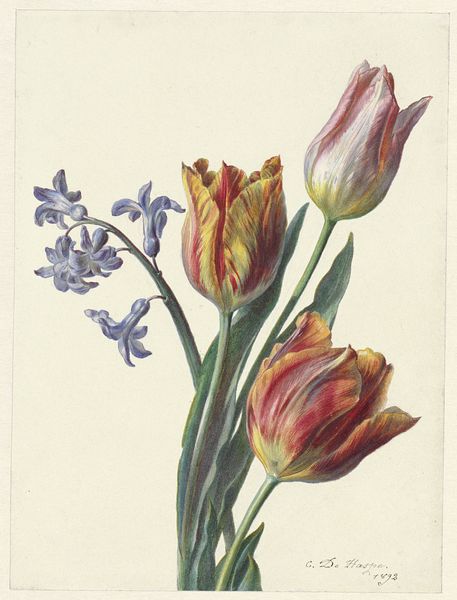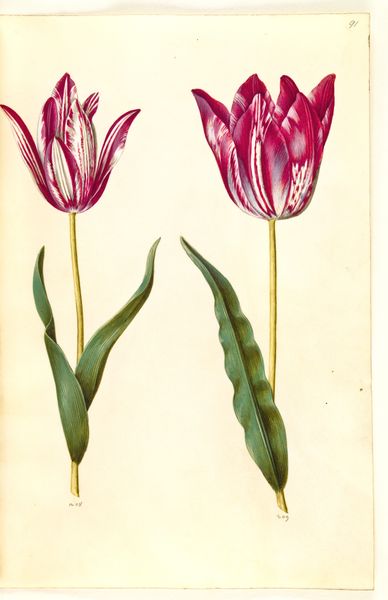
painting, watercolor
#
dutch-golden-age
#
painting
#
watercolor
#
watercolour illustration
#
botanical art
#
watercolor
Dimensions: height 320 mm, width 210 mm
Copyright: Rijks Museum: Open Domain
Elias van Nijmegen created these Studies of Four Tulips using watercolor and pencil. Van Nijmegen lived and worked during a unique period of Dutch history. The Dutch Golden Age saw unprecedented economic prosperity, and with it, the rise of a wealthy merchant class. But this wealth was directly connected to Dutch colonialism and the exploitation of resources and people in places like Indonesia. The unique beauty of these blooms, their vibrant colors, and almost geometric symmetry are a world apart from this exploitation, and perhaps a kind of retreat from it. The Dutch became fascinated with collecting and cultivating exotic plants, and the tulip, in particular, became a status symbol, sparking a speculative frenzy known as "Tulip Mania." As you look at these tulips, consider the complex social and economic forces that shaped their value and the artist's fascination with them. What does it mean to find beauty in a world marked by inequality?
Comments
No comments
Be the first to comment and join the conversation on the ultimate creative platform.
